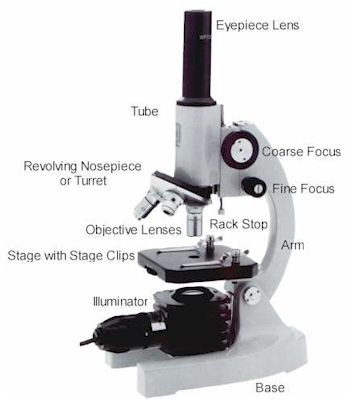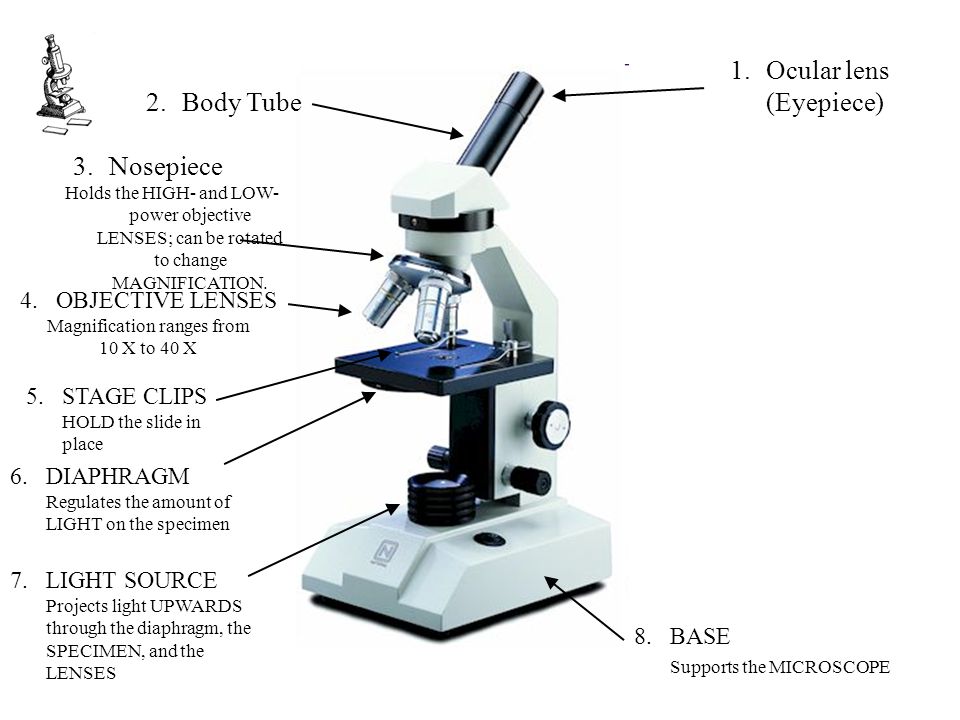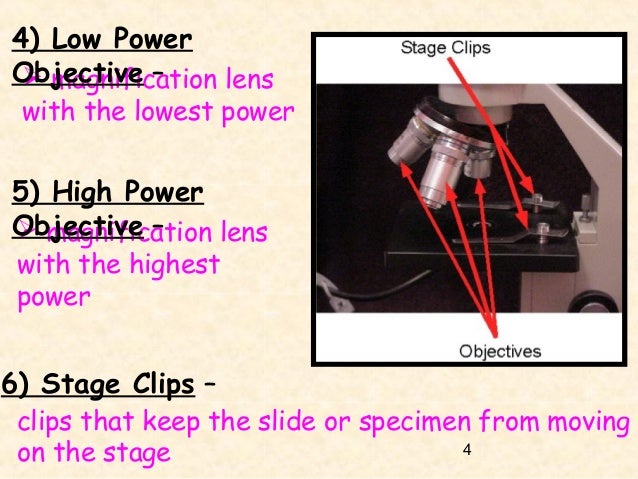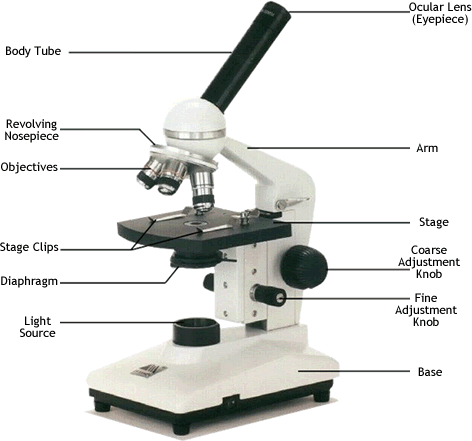Microscope low power objective definition
Microscope Low Power Objective Definition. The standard microscope is that the eyepiece is 10x magnification and three types of powered magnification helps it magnify even more. The low power objective on a microscope is the shortest or second shortest objective lens found on standard laboratory microscopes. Because of this the coarse adjustment should only be used with low power 4x and 10x objectives and never with the high power lenses 40x and. Low power objective 10x this objective lens is the next lowest powered and is often the most helpful when it comes to analyzing glass slide samples.
 The Microscope Ppt Video Online Download From slideplayer.com
The Microscope Ppt Video Online Download From slideplayer.com
Low power objectives cover a wide field of view and they are useful for examining large specimens or surveying many smaller specimens. The total magnification for this lens is equal to 100x magnification 10x eyepiece lens x the 10x objective equals 100. Low magnification objectives 5x and 10x intermediate magnification objectives 20x and 50x and high magnification objectives 100x. Low power objective lenses typically add 10x to the magnifying power of the microscope. Low power objective 10x this objective lens is the next lowest powered and is often the most helpful when it comes to analyzing glass slide samples. The power for the low objective is 10x.
This objective is useful for aligning the microscope.
Gordon the low power objective on a microscope is the shortest or second shortest objective lens found on standard laboratory microscopes. Place one of the prepared slides onto the stage of your microscope. Almost any feature you need to observe in this course can be located with the 100x total magnification this objective provides. Low power objective lenses typically add 10x to the magnifying power of the microscope. The power for the low objective is 10x. The low power objective on a microscope is the shortest or second shortest objective lens found on standard laboratory microscopes.

Gordon the low power objective on a microscope is the shortest or second shortest objective lens found on standard laboratory microscopes. Almost any feature you need to observe in this course can be located with the 100x total magnification this objective provides. Because of this the coarse adjustment should only be used with low power 4x and 10x objectives and never with the high power lenses 40x and. Lower power objectives have relatively low numerical apertures and are designed to be used dry with only air as the imaging medium between the objective front lens and the cover glass. Low power objective lenses typically add 10x to the magnifying power of the microscope.
 Source: microscopeworld.com
Source: microscopeworld.com
The low power objective on a microscope is the shortest or second shortest objective lens found on standard laboratory microscopes. The low power objective on a microscope is the shortest or second shortest objective lens found on standard laboratory microscopes. Almost any feature you need to observe in this course can be located with the 100x total magnification this objective provides. Essentially objective lenses can be categorized in to three main categories based on their magnification power. Low power objective 10x this objective lens is the next lowest powered and is often the most helpful when it comes to analyzing glass slide samples.
 Source: slideplayer.com
Source: slideplayer.com
The power for the low objective is 10x. The low power objective on a microscope is the shortest or second shortest objective lens found on standard laboratory microscopes. Essentially objective lenses can be categorized in to three main categories based on their magnification power. This shortest objective is useful for getting an overview of the slide especially handy with some of the slides that contain whole organs like a section of the spinal cord lung digestive tract ovary etc. Low power is 4x medium power is 10x and high power is 40x.
 Source: slideshare.net
Source: slideshare.net
Low power objective lenses typically add 10x to the magnifying power of the microscope. The low power objective on a microscope is the shortest or second shortest objective lens found on standard laboratory microscopes. Microscope moves the stage up and down to bring the specimen into focus. Gordon the low power objective on a microscope is the shortest or second shortest objective lens found on standard laboratory microscopes. Low power is 4x medium power is 10x and high power is 40x.
 Source: slideplayer.com
Source: slideplayer.com
Low magnification objectives 5x and 10x intermediate magnification objectives 20x and 50x and high magnification objectives 100x. The low power objective in a microscope typically a 4x 10x is the objective with the lowest magnification in the microscope. Low magnification objectives 5x and 10x intermediate magnification objectives 20x and 50x and high magnification objectives 100x. This shortest objective is useful for getting an overview of the slide especially handy with some of the slides that contain whole organs like a section of the spinal cord lung digestive tract ovary etc. Low power objective lenses typically add 10x to the magnifying power of the microscope.
 Source: slideplayer.com
Source: slideplayer.com
The gearing mechanism of the adjustment produces a large vertical movement of the stage with only a partial revolution of the knob. Low power objective 10x. The low power objective in a microscope typically a 4x 10x is the objective with the lowest magnification in the microscope. Low power objective 10x this objective lens is the next lowest powered and is often the most helpful when it comes to analyzing glass slide samples. This next shortest objective is probably the most useful lens for viewing slides.
 Source: slideshare.net
Source: slideshare.net
Almost any feature you need to observe in this course can be located with the 100x total magnification this objective provides. Low power objective 10x. This shortest objective is useful for getting an overview of the slide especially handy with some of the slides that contain whole organs like a section of the spinal cord lung digestive tract ovary etc. The gearing mechanism of the adjustment produces a large vertical movement of the stage with only a partial revolution of the knob. Low power objectives cover a wide field of view and they are useful for examining large specimens or surveying many smaller specimens.
 Source: www2.hawaii.edu
Source: www2.hawaii.edu
Place one of the prepared slides onto the stage of your microscope. This next shortest objective is probably the most useful lens for viewing slides. Low power objective 10x this objective lens is the next lowest powered and is often the most helpful when it comes to analyzing glass slide samples. Because of this the coarse adjustment should only be used with low power 4x and 10x objectives and never with the high power lenses 40x and. Low power objective lenses typically add 10x to the magnifying power of the microscope.
 Source: slideplayer.com
Source: slideplayer.com
Low power is 4x medium power is 10x and high power is 40x. This objective is useful for aligning the microscope. Low power objective 10x. The standard microscope is that the eyepiece is 10x magnification and three types of powered magnification helps it magnify even more. Gordon the low power objective on a microscope is the shortest or second shortest objective lens found on standard laboratory microscopes.
 Source: quizlet.com
Source: quizlet.com
Place one of the prepared slides onto the stage of your microscope. Low power is 4x medium power is 10x and high power is 40x. The gearing mechanism of the adjustment produces a large vertical movement of the stage with only a partial revolution of the knob. Low magnification objectives 5x and 10x intermediate magnification objectives 20x and 50x and high magnification objectives 100x. The maximum theoretical numerical aperture obtainable with air is 1 0 however in practice it is virtually impossible to produce a dry objective with a numerical aperture above 0 95.
 Source: boruhealthmachine.org
Source: boruhealthmachine.org
Low power objective 10x this objective lens is the next lowest powered and is often the most helpful when it comes to analyzing glass slide samples. This objective is useful for aligning the microscope. Essentially objective lenses can be categorized in to three main categories based on their magnification power. The low power objective on a microscope is the shortest or second shortest objective lens found on standard laboratory microscopes. Lower power objectives have relatively low numerical apertures and are designed to be used dry with only air as the imaging medium between the objective front lens and the cover glass.
 Source: slideshare.net
Source: slideshare.net
Low power objective lenses typically add 10x to the magnifying power of the microscope. Specially when one does not know what one is looking for or where it is in the sample it is useful to have a low power objective to navigate the sample. This shortest objective is useful for getting an overview of the slide especially handy with some of the slides that contain whole organs like a section of the spinal cord lung digestive tract ovary etc. Place one of the prepared slides onto the stage of your microscope. Microscope moves the stage up and down to bring the specimen into focus.
 Source: boruhealthmachine.org
Source: boruhealthmachine.org
Gordon the low power objective on a microscope is the shortest or second shortest objective lens found on standard laboratory microscopes. The low power objective in a microscope typically a 4x 10x is the objective with the lowest magnification in the microscope. Gordon the low power objective on a microscope is the shortest or second shortest objective lens found on standard laboratory microscopes. Lower power objectives have relatively low numerical apertures and are designed to be used dry with only air as the imaging medium between the objective front lens and the cover glass. Low magnification objectives 5x and 10x intermediate magnification objectives 20x and 50x and high magnification objectives 100x.
 Source: boruhealthmachine.org
Source: boruhealthmachine.org
The low power objective in a microscope typically a 4x 10x is the objective with the lowest magnification in the microscope. Essentially objective lenses can be categorized in to three main categories based on their magnification power. The low power objective on a microscope is the shortest or second shortest objective lens found on standard laboratory microscopes. This shortest objective is useful for getting an overview of the slide especially handy with some of the slides that contain whole organs like a section of the spinal cord lung digestive tract ovary etc. The standard microscope is that the eyepiece is 10x magnification and three types of powered magnification helps it magnify even more.
 Source: www2.nau.edu
Source: www2.nau.edu
The standard microscope is that the eyepiece is 10x magnification and three types of powered magnification helps it magnify even more. Low power objective lenses typically add 10x to the magnifying power of the microscope. Lower power objectives have relatively low numerical apertures and are designed to be used dry with only air as the imaging medium between the objective front lens and the cover glass. The low power objective on a microscope is the shortest or second shortest objective lens found on standard laboratory microscopes. Low magnification objectives 5x and 10x intermediate magnification objectives 20x and 50x and high magnification objectives 100x.
If you find this site convienient, please support us by sharing this posts to your favorite social media accounts like Facebook, Instagram and so on or you can also save this blog page with the title microscope low power objective definition by using Ctrl + D for devices a laptop with a Windows operating system or Command + D for laptops with an Apple operating system. If you use a smartphone, you can also use the drawer menu of the browser you are using. Whether it’s a Windows, Mac, iOS or Android operating system, you will still be able to bookmark this website.





